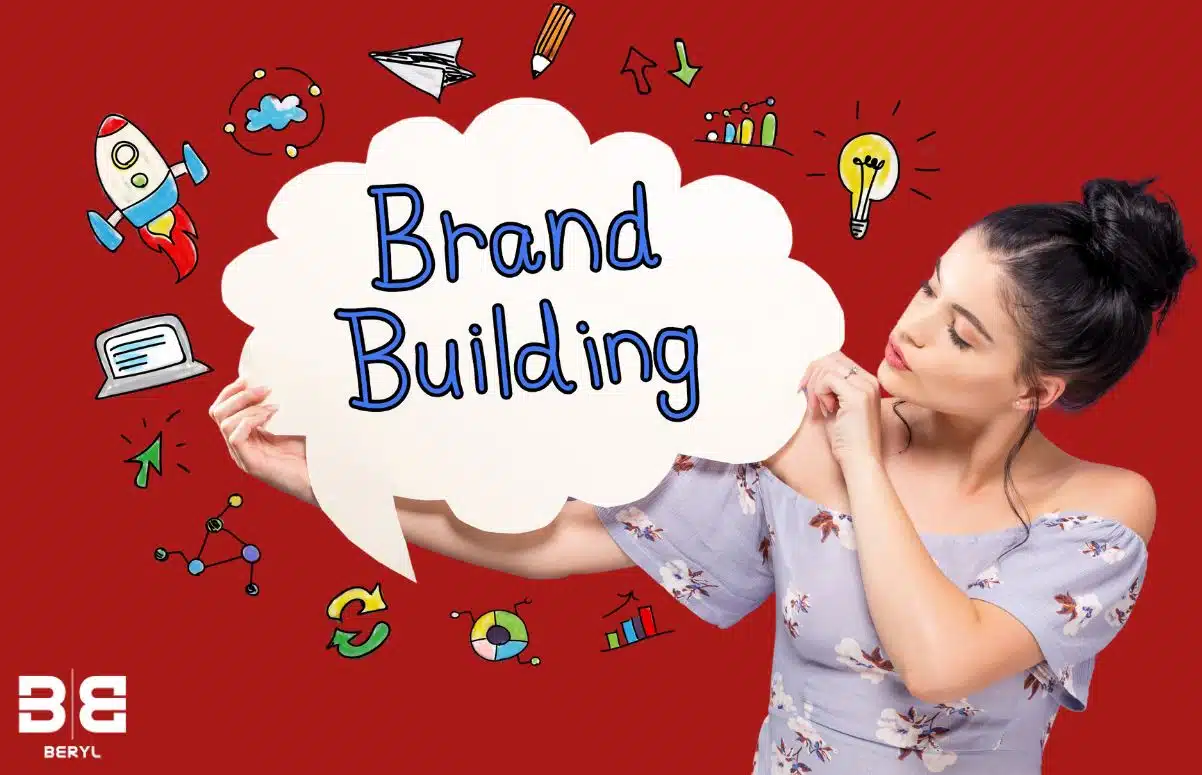The brand identity is a set of elements that affects the way your customers and other people perceive your brand and its meaning to them. It is important that all the elements should be designed to communicate the values and voice of the brand in a correct way.
This is important as if it is not appealing enough, your consumers will not take you seriously and may go for your competitors just because their brand looks more professional and appealing.
In order to create a powerful brand identity that speaks to the minds of the consumers and delivers the right message to them, a 5 step guide should be followed. These steps are:
Here are the 5 Simple Steps for Building a Powerful Brand Identity:
- Brand Discovery
- Brand Research
- Brand Design
- Brand style Guide
- Brand Implementation
Step 1: The Brand Discovery
Before starting on the designing phase of your brand, you need to first be clear on the values you want your brand to be based on. Put it into words and be clear as to what problems the brand intends to solve and what the purpose of doing so is.
When discussing about the brand with your designer, prepare a questionnaire that answers the foundational questions about the company so as to make the designer aware of all things they need to know regarding the brand before they even start thinking of designing for the same.
By providing as much detailed information as possible, you are helping him or her to make an identity that resonates what you are thinking in your minds. By providing clarity in your information, you will help your brand designer in creating visuals and message that hooks your audience emotionally while drawing them closer. After all, in today’s market, people buy with emotions and later justify these purchase decisions with logic.
Your goal in this Brand discovery phase should be make your designer truly understand what you want to represent through your brand and your vision. Once they have this knowledge, it would be easier for them to move on to the next step, i.e. the research phase.
Step 2: Brand Research
Designing a new brand identity follows a process similar to starting a new business. This makes this research step an important junction in deciding whether your brand is unique and has a niche in the market or not. Once the company brief is clear, the designer needs to spend time to study your competitors’ strategies to ensure there is no similarity between your strategies and that your identity remains truly unique.
Another target research area is to study the target audience and their behavior to understand their preferences, their likes and dislikes so that the designer can create a brand identity that resonates with their choices. This will also help in understanding the branding trends that are relevant to your target audience and brainstorm better and more creative ideas.
Once you have a collage of the elements, fonts, design direction, color palette, images, textures and patterns, you will be able to nail down the basic aesthetics that are important in deciding the design foundation of your brand.
Step 3: Brand Designing
Once you have determined who your target audience is, what your brand voice will be and conducted adequate market research, you have laid down the basic elements of the brand. Now comes the fun part- the designing. This is the phase in which the key design assets of your brand are created that make for the building blocks of your branding process.
Your aim should be to make sure that every element complements and enhances the value of other elements in such a way that together they tell the story you want them to tell.
One of the major points to remember is to create a unique look that keeps the brand on top of the customers’ mind for a long time to come. If you are rebranding an existing product, you also need to ensure that it doesn’t confuse the existing customers but entices new customers at the same time. There are several elements that form a major part of the designing process including
- Logo
- Typography
- Color palette
- Photography and imagery
- Textures and pattern
- Layout and composition
However, do not over inundate your brand with as many elements you can think of. Think of simple logos so that when splashed across different media, they remain as appealing as they were in the boardroom to you. The logo is the visual identity that should represent your brand at its most basic level. Remember, your design needs to sort out different purposes apart from customer remembrance such as
- Social media banners
- Website design integration
- Point of sale displays
- Billboards
- Signage
- Stationary
- Advertising banner ads
- Merchandise etc….
After the finalization of your logo and other brand elements, make sure that they represent all your marketing touch downs in a consistent way. It is for this reason that the next phase is important- having a brand style guide.
Step 4: Brand Style Guide
Forming the core of your company’s identity is your brand style guide. It is practical document containing rules regarding logo usage, color palette codes and typefaces, image uses, layout guidelines and much more. This guide is important for the cohesiveness of all the collateral and marketing materials of your design.
This guide can be shared with all the creatives working on your brand such as your social media designers, signage designers, videographers and stationery designers. It ensures that they follow the same set of guidelines professionally so as to ensure a consistent look across all your marketing channels.
Without a style guide, there runs a heavy risk of inconsistency across the advertising and marketing platforms. They are important for both small and a big business because they are a tool to ensure consistency across different channels. This consistency is an important driver of purchase decisions of your end customers.
Step 5: Brand Implementation
This is the step when your brand identity takes the physical shape. This is the phase when your brand identity elements should come together in a way that they provide the best brand experience to your customers and all your prospects that is consistent with your marketing essentials. Let us discuss some examples of some touch points that will showcase the benefit you incur from a strong branding image.
- Website: In today’s world, your website forms the digital identity of your brand. It is the hub of all your business and the place where your potential customers check you out before going for your product or service. It is a highly competitive market and a great website can be a huge driver in pushing your sales up by making sure that they think that your delivery capability is as good as your website.
- Advertising: Consistency across all your advertising channels such as Billboards, printed advertising, point of sale ads, promotional products and events ensure that higher trust and a better online presence among your customers.
- Product Packaging: If the packaging of your product matches your marketing, it ensures a stronger brand identity. The products you sell and their packaging, right from their labeling to postal shipping and in store packaging ensures a stronger brand presence in the market.
- Print Media: Do not forget about putting your brand on paper too. Elements such as flyers, catalogues, books, user manuals, publications and direct mail all together help in ensuring consistency through visual messages.
Summary
Remember to always keep in your mind the value of your visual brand and how you can invest in the same. Not only will it help you in your customer endeavors, it will also help you in hiring your future designers as you are better informed of the process.
After all, creating a powerful brand identity is a step by step process in which each step needs to be taken after taking the nuances of your target audience and your brand goals. Always strive for consistency across all the channels, thus ensuring that your brand message gets right across to your customers.
When looking to develop your visual brand identity, it’s wise to consider partnering with a professional Brand Identity Design Agency. They can provide valuable expertise and guidance through the branding process, helping to craft a consistent identity and messaging that resonates with your target audience and achieves your business goals. Investing in professional brand identity design pays off through stronger customer connections and alignment across channels.


